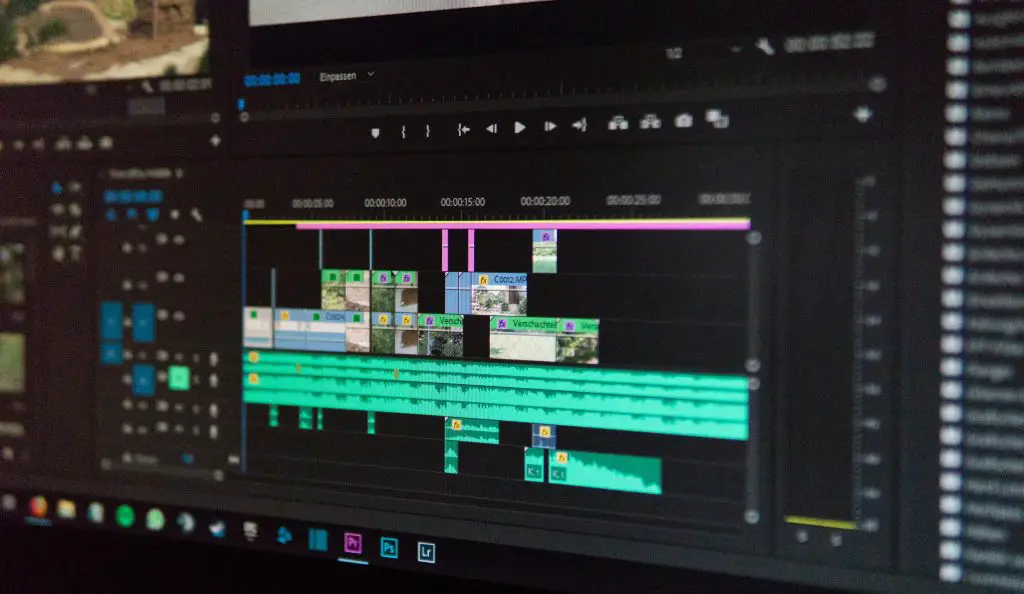Section 179: How It Helps Your Business Save on Taxes
Publicado:Principales conclusiones
- Section 179 lets you deduct the full cost of qualifying equipment or software in the year it’s placed into service, instead of spreading that deduction out over several years. This can make a big difference if you’re trying to save money on your taxes right away.
- You don’t have to buy brand-new items to use Section 179. Used equipment is eligible too, as long as it’s new to your business and used primarily for business purposes.
- For the 2025 tax year, the maximum deduction limit is $1,220,000, with a spending cap of $3,050,000. If you go over that spending limit, your deduction gets reduced dollar-for-dollar.
- Section 179 only applies to items used more than 50 percent of the time for business. So if you buy a truck and use it for work most days, but also for weekend getaways, only the business-use percentage qualifies for the deduction.
- You have to put the equipment or software into use by December 31 of the tax year to claim the deduction. Ordering it isn’t enough—it needs to be set up and actively used for your business.
If you’ve ever wondered whether buying new equipment, software, or even a vehicle for your business could actually lower your tax bill, then you’re already halfway to discovering what Section 179 is all about. Section 179 of the Internal Revenue Code is a tax deduction designed specifically to encourage small and medium-sized businesses to invest in themselves. And yes, that includes you if you run a business and are looking for smart ways to reduce your taxable income.
In simple terms, Section 179 lets you write off the full cost of qualifying business purchases right away, rather than having to depreciate them over time. It’s one of those rare tax rules that actually feels like it’s working in your favor.

What Is Section 179?
At its core, Section 179 allows business owners to deduct the full purchase price of qualifying equipment or software bought or financed during the tax year. Instead of writing off a portion of the item over several years (which is how traditional depreciation works), Section 179 lets you take that entire deduction up front. For many businesses, that means a significant tax break in the same year the expense happens.
This tax benefit isn’t just about office chairs and computers either. It can cover a wide range of items, from heavy machinery to business-use vehicles to off-the-shelf software. If it’s something your business needs and will use, there’s a good chance it qualifies.
What Deductions Qualify Under Section 179?
When you hear about Section 179, the big headline is usually the fact that you can deduct the full purchase price of qualifying property in the same year it’s placed in service. But the real question is: what exactly qualifies?
The good news is that a wide variety of items can be written off under Section 179, especially if they’re tangible assets that your business actually uses. We’re talking about everyday equipment, tools, and even some types of software. Here’s a breakdown to help you get a clear sense of what the IRS is looking for when it comes to eligibility.
Tangible Business Equipment
If you’ve bought physical equipment to use in your business (things like office furniture, machines, computers, or tools) it likely qualifies. This includes everything from heavy construction equipment to desktop computers and even printers. The rule of thumb is that the item must be something you can touch and move (so real estate doesn’t count), and it has to be used more than 50% of the time for business purposes. That last part is key: if you’re using something part-time for business and part-time for personal use, only the business-use percentage qualifies.
Vehicles Used for Business
Some vehicles qualify under Section 179 too, but there are special limitations. You can’t just write off a new sports car because you took a few work calls in it. To qualify, the vehicle has to be used primarily for business—more than 50% of the time—and meet IRS guidelines. Large SUVs, vans, and pickup trucks (generally with a gross vehicle weight rating over 6,000 pounds) are eligible for larger deductions, although there are still dollar caps in place. Passenger cars have more restrictions, so it’s always good to check the current limits.
Off-the-Shelf Software
Business software can qualify too, as long as it’s what the IRS calls “off-the-shelf.” That just means it’s available to the general public, not custom-built just for your company. Think accounting programs, inventory systems, or CRM tools—if they’re commonly used and not heavily customized, they’re probably eligible. You also have to start using the software in the same year you want to take the deduction.
Business Improvements and Property Additions
Some nonresidential property improvements also qualify under Section 179, which is something a lot of business owners overlook. This includes things like HVAC systems, fire alarms, security systems, and roofing. These are upgrades that help keep your building functional, and the IRS recognizes that they can be significant investments for small businesses. Just keep in mind, this only applies to improvements made to buildings that are used strictly for business—home offices and mixed-use spaces usually don’t count.
Used Equipment (Yes, Really)
One of the most overlooked benefits of Section 179 is that it doesn’t require you to buy brand-new stuff. Used equipment qualifies as long as it’s new to you and meets all the other criteria. So if you buy a secondhand forklift or a refurbished copier for your business, you can still write it off just like you would with something new.
What Doesn’t Qualify
Now, there are a few things that definitely do No qualify under Section 179. Land and buildings are the big ones—real estate isn’t eligible. Inventory and property used for lodging (like a hotel room or rental apartment) are also excluded. And as mentioned earlier, anything used less than 50% of the time for business purposes doesn’t make the cut.
Section 179 Limits for 2025
The IRS updates Section 179 limits regularly to keep up with inflation and policy changes, and for tax year 2025, the deduction limit is expected to be $1,220,000. That means you can write off up to that amount in qualifying purchases.
There’s also a spending cap to be aware of. For 2025, if your total equipment purchases exceed $3,050,000, your Section 179 deduction begins to phase out dollar-for-dollar. This rule is aimed at helping small to mid-sized businesses rather than huge corporations.

Bonus Depreciation vs. Section 179
If you’ve heard of bonus depreciation, you might be wondering how it fits in with Section 179. They actually work together, but they’re not the same thing. While Section 179 lets you choose how much of an asset to deduct in the first year, bonus depreciation kicks in automatically for whatever amount you didn’t expense.
As of 2025, bonus depreciation is scheduled to be 60%, down from previous years. That means you can still write off a large portion of the remaining value of qualified property after your Section 179 deduction is applied. For businesses that need to invest heavily in their infrastructure or tools, using both strategies can lead to a major tax advantage.
How to Claim the Section 179 Deduction
You claim the Section 179 deduction when you file your federal tax return; specifically, it goes on Part I of IRS Form 4562. You’ll need to list the assets you’re expensing, their cost, and the amount you’re choosing to deduct. If you’re working with an accountant or tax preparer, they’ll likely handle this for you, but it’s still good to understand what’s being reported on your behalf.
The key is to make these purchases and place the items in service by the end of the tax year—December 31. Just ordering the item isn’t enough; it has to be up and running in your business operations.
Common Pitfalls to Avoid With Section 179
One common mistake is trying to use Section 179 for something that doesn’t meet the qualifications, like property used mainly for personal use or a building you bought for your business. Another is missing the deadline—remember, the item must be used in your business during the same year you claim the deduction.
Some business owners also forget about the business use requirement. If you can’t prove that you’re using the asset for work more than half the time, your deduction might be reduced or denied entirely.
And of course, there’s the overall income limitation. You can’t use Section 179 to create a tax loss, you can only deduct up to your business’s taxable income. Anything left over can usually be carried forward to the next year.
Why Section 179 Matters for Small Businesses
This deduction gives you the chance to invest in better tools, technology, or transportation without the long wait to recover your costs. It helps level the playing field for smaller businesses that may not have the cash flow of large corporations but still need to grow and modernize. Section 179 can make a big difference when it comes to end-of-year decisions and budgeting. If you’ve been putting off a purchase that your business truly needs, this could be the push you’ve been looking for.
The Final Word on Section 179…
Section 179 isn’t just some obscure tax code, it’s a practical tool that can give your business a real financial edge. By letting you deduct the full cost of qualifying purchases right away, it can lower your tax bill and free up cash when you need it most. As long as you understand the rules, stay within the limits, and make smart purchasing decisions, you can take full advantage of what Section 179 offers.
And if you’re ever unsure about the details, looping in a tax professional can help you avoid costly mistakes and make the most of this powerful deduction.

Section 179: FAQ
1. Can I use Section 179 if I’m self-employed or run a small business from home?
Yes, you absolutely can. Section 179 is designed with small and mid-sized businesses in mind, and that includes sole proprietors and home-based businesses. The key thing to remember is that whatever you’re writing off under Section 179 must be used primarily for business. For example, if you buy a computer and use it 80 percent for work and 20 percent for personal stuff, you can still claim 80 percent of the cost under this deduction. Just be ready to back up those numbers in case you’re ever asked to.
2. What kinds of things can I deduct using Section 179?
You can deduct a wide range of physical business assets, like machinery, office furniture, computers, and vehicles that meet certain criteria. You can also deduct off-the-shelf software, which is a huge help if you’re investing in new systems to keep your operations running smoothly. Certain building improvements, like alarm systems or HVACs in nonresidential buildings, also count. The IRS has pretty clear guidelines on what qualifies, but the general rule is that the item must be tangible, used more than half the time for business, and placed in service during the tax year.
3. What happens if I buy more than the deduction limit allows?
If your total equipment or software purchases go over the spending cap, which for 2025 is $3,050,000, your Section 179 deduction starts getting phased out. It gets reduced dollar-for-dollar above that amount. Once you hit about $4,270,000 in spending, the deduction is phased out completely. That’s one reason Section 179 is often more beneficial for small and medium-sized businesses rather than large corporations.
4. Do I have to take the full deduction amount all at once?
No, you don’t. Section 179 gives you flexibility. You can choose to deduct just part of the purchase and depreciate the rest over several years. This is especially useful if you’re trying to spread out your deductions to better manage your taxable income from year to year. You’ll make that choice when you fill out Form 4562, which is where the deduction is reported on your tax return.
5. What if the deduction is more than my business income for the year?
Section 179 can’t be used to create a business loss. If your total Section 179 deduction is larger than your taxable business income for the year, you’ll only be able to deduct up to your income. The good news is that any unused deduction can be carried forward to future years. So if you had a lower-income year this year but expect more income next year, you won’t lose the benefit—you’ll just have to wait a bit to fully take advantage of it.
6. How do I actually claim Section 179 on my taxes?
To claim the deduction, you’ll need to file IRS Form 4562 when you submit your federal tax return. On that form, you’ll list out the assets you purchased, their cost, and the amount you’re electing to deduct under Section 179. It’s important that you keep solid records, including invoices, receipts, and documentation showing that the item was placed in service during the tax year. If you’re using tax software or working with a professional, they’ll usually guide you through the process, but it’s still a good idea to understand the basics of what’s being filed on your behalf.


